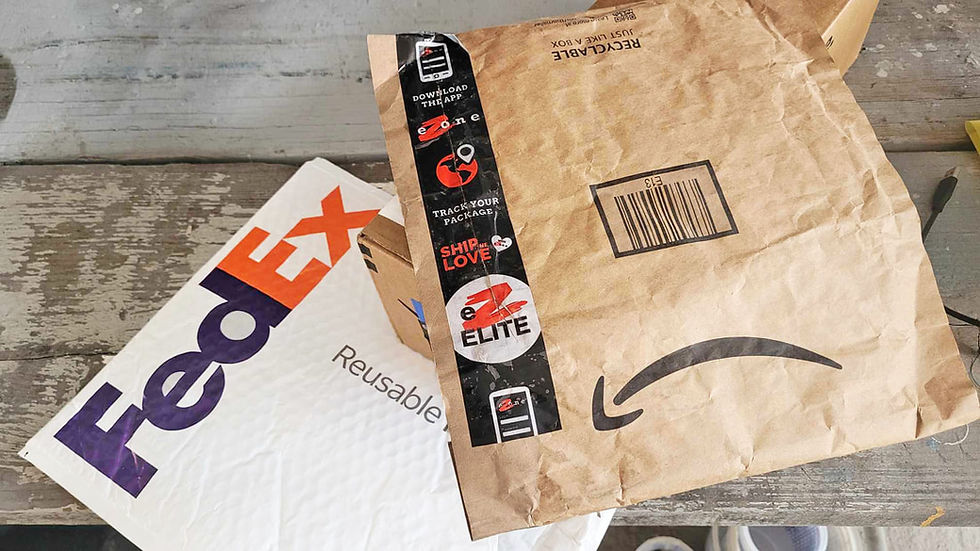The lifestyle of a liveaboard cruiser or digital nomad seems romantic and exciting, and let’s be real, for the most part it is. Each day can be an exciting adventure in a foreign country, meeting new people and experiencing the local culture. Logistically speaking though, some things can be difficult to manage.
A question that often pops up is how to receive mail or packages when you don’t have a fixed address. To help out, here’s a few different methods you can use to have things delivered while travelling and living as a digital nomad or full time liveaboard cruiser.

Ask friends and family
One of the first options that comes to mind is having mail delivered to family and friends. This could be people back in your home country or in locations around the world. It’s a good option for important or confidential mail that you need a stable address for, such as government documents and new bank cards. Two things to consider when doing this are;
Who do you trust to receive your private mail?
What’s the cost of having mail forwarded to your current location?
When things arrive, we generally have people send us a picture of it so we can let them know whether to forward, store or destroy the letter. We've also had some items sent to friends or family we know will be flying out to meet us soon, to save on shipping costs.
Use hotels, short term rental and marinas
When staying in short term accommodation such as hotels, holiday rentals, AirBnb’s or marinas, you can generally have items delivered directly to the address. It’s a good way to get mail that you’re confident will be delivered before it’s time to move on to the next destination. If you’re the sole person living there you can usually just put the address along with your name. A marina or hotel might require additional delivery instructions or that the office staff be notified. It's good for parcels as well as to receive new ID or bank cards from home.
Choose a courier collection point
Some online stores offer a checkout option where the package can be collected from a local delivery point rather than needing to go to an address. This was particularly useful to us when living on anchor in the Mediterranean, as we often had no way to get a delivery address without staying in a marina. Some of the couriers I’ve seen offer this service in conjunction with an online seller are UPS, FedEx and DPD.
Amazon lockers
This one is specific to Amazon but is incredibly useful if that’s somewhere you shop. Rather than selecting an address for delivery, you can generally choose to have it delivered to a nearby Amazon locker or collection point. We’ve done this in Europe, Australia and North America, partnering it with an Amazon Prime membership so we could take advantage of the free delivery and returns.
Find a freight or parcel forwarder
One problem we quickly ran into in the Caribbean was how few international sellers would ship products to the islands. The solution; using a mail and freight forwarding service. The company structure I'm specifically talking about is where there's a depot setup that you can have things sent to and the company then forwards them to your address.
One example is EZone, the company we used while in Trinidad and Tobago that operates on a number of Caribbean islands. EZone offered addresses we could have mail sent to in the United States, Canada and the United Kingdom. For a reasonable fee they would then forward our mail to the shipyard, taking care of the customs and importation process as well. We found them by looking into which local companies would forward smaller packages from overseas, with “Amazon parcel forwarder Trinidad” being the most helpful search term.
If you’re living at anchor or have a more transient lifestyle then a forwarding service might still be a viable option as many allow you to pick it up from their offices, rather than having it delivered.
Set up a virtual mailbox
We have limited experience with virtual mailboxes but the one time we did need it, it was quite handy.
When you sign up to a virtual mail service, you’ll get a physical address to have mail sent to. When a letter or parcel arrives the information is scanned and you can read it online, often through the company’s secure portal. Then, depending on the service you’ve chosen, you’ll get given options for what you want to do with the mail, including shredding or forwarding it.
To get you started here's a few virtual mailboxes that have been suggested by other cruisers and digital nomads.
If you've discovered any other solutions leave a comment and we'll update the list to help others living the nomadic life!











Comentários